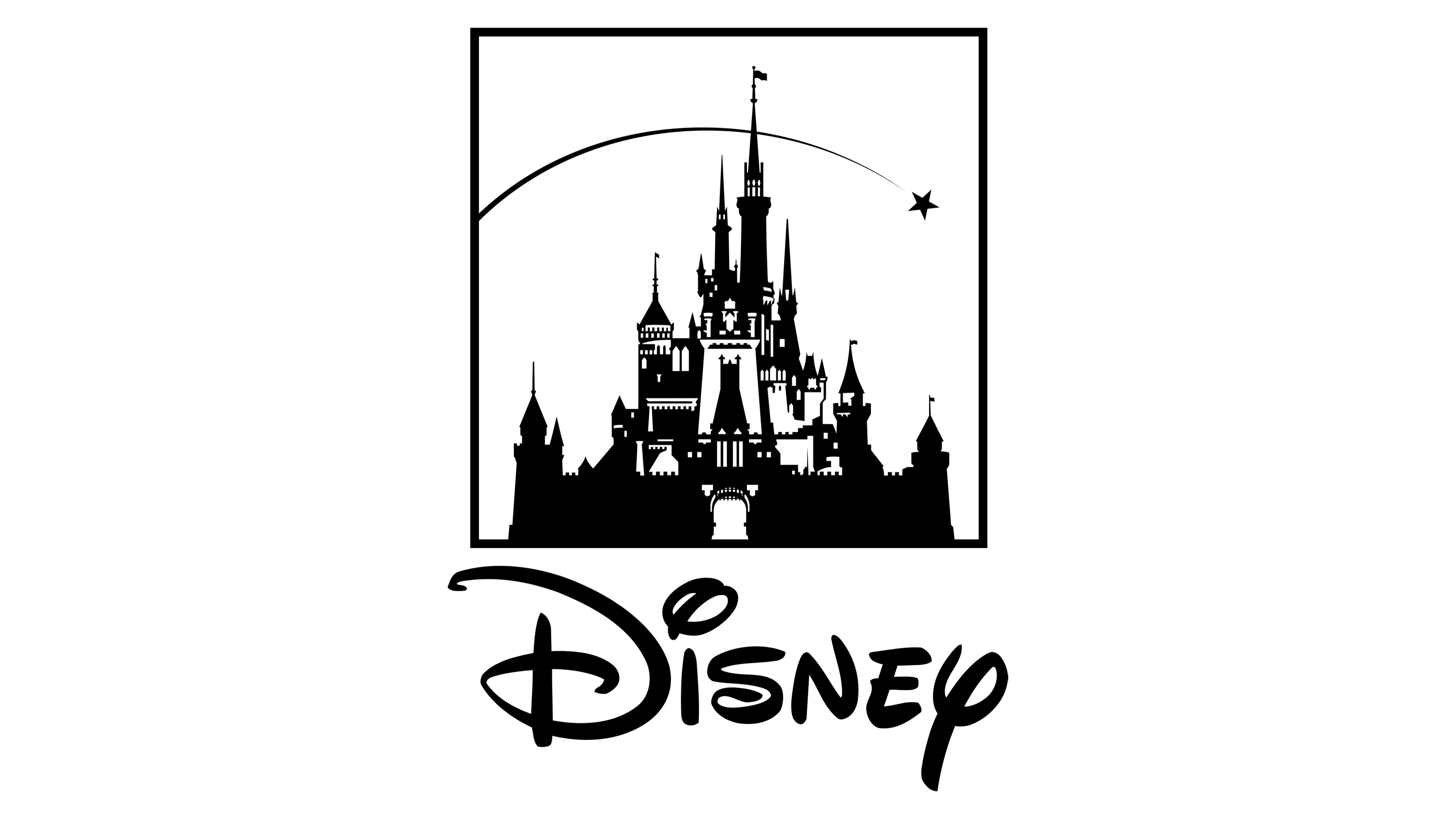Walt Disney Logo
Tags: cartoons | entertainment | television
At its heart, The Walt Disney Company, under the leadership of CEO Bob Chapek, is a testament to the power of dreams and storytelling. Originating from the imaginative minds of brothers Walt and Roy O. Disney, this colossal entity has evolved far beyond its humble beginnings as a cartoon studio. Its expertise spans a diverse array of media and entertainment sectors including groundbreaking film production, captivating television networks, and enchanting theme parks. Disney’s magic is not confined to any single continent; it casts its spell globally, touching hearts in numerous countries with its beloved characters and narratives.
Meaning and History
Embarked on a journey in 1923 by Walt and Roy O. Disney, The Walt Disney Company metamorphosed from a modest animation studio into a cornerstone of global entertainment. Its pioneering spirit was first showcased in “Snow White and the Seven Dwarfs,” a marvel in full-length animation. The realms of magic expanded with the inception of Disneyland in 1955, a theme park that redefined entertainment. Disney’s narrative continued with strategic expansions, notably the acquisitions of Marvel, Lucasfilm, and 21st Century Fox, which broadened its storytelling canvas. Currently, with its innovative foray into digital streaming via Disney+, the company reasserts its role as a vanguard of entertainment, consistently pushing the boundaries of creativity, fantasy, and technology.
What is Walt Disney?
Walt Disney Company is a multifaceted entertainment juggernaut. It delves into film production, theme parks, and television, offering an array of family-oriented experiences and stories. Disney’s global presence has made it synonymous with timeless storytelling and imagination.
1929 – 1937
The foundational logos of the esteemed animation company were directly influenced by its visionary creator. Among these early designs, one stood out with a depiction of the studio’s iconic animated character in mid-stride, already emblematic of the company’s creative spirit. The logo was structured with the phrase “PRODUCTIONS Ltd.” prominently placed above the character’s image. Flanking this were the character’s name, divided into two parts, each underscored by the terms “TRADE MARK” and “REGISTERED.” Further distinguishing this design was the inclusion of “SOUND CARTOONS” in vibrant letters outlined in a contrasting hue. Anchoring the design at the base was the address “2719 HYPERION HOLLYWOOD,” all rendered in a bespoke typeface characterized by its unique set of glyphs, adding a distinctive flair to each element of the logo.
1937 – 1948
The initial emblem of the studio was an artistic adaptation of its founder’s personal signature, transformed and magnified to create a striking brand identity. This design cleverly blended uppercase and lowercase letters, with the enlarged and stylized “W” and “D” alongside the more diminutive “i” and “y.” This choice of lettering subtly conjured images of a mouse’s distinctive ears and tail, a clever allusion to the studio’s most famous animated character, encapsulating the essence of the brand in a single, fluid design.
1948 – 1979
A decade following its inception, the logo underwent a significant stylistic evolution. The inscription of “Walt Disney,” while retaining a handwritten aesthetic, was notably stripped of its italicized stance. This alteration marked a shift in the brand’s visual representation, signaling a new era in the company’s history while maintaining a connection to its rich legacy.
1972 – 1983
Concurrently, a distinct studio emblem was crafted. In this 1937 iteration, the term “Productions” was included at the base of the design, executed in a sleek, Sans Serif typeface. This choice imparted a modern and streamlined look to the logo, differentiating it from its predecessors while maintaining a cohesive brand identity.
1983 – 1985
During this creative period, another logo variant was introduced, this time incorporating the word “Productions” in a serif font, reminiscent of classic and universal typography. However, the primary inscription remained unchanged, continuing to feature the signature Waltograph font, thereby bridging the past with the present and lending a sense of continuity amidst the evolving brand aesthetics.
1985 – 2006
In the mid-1980s, the logo’s evolution embraced a new dimension by adding a graphical element above the “Walt Disney” text – a majestic castle. This fairy-tale inspired icon was rendered in a series of horizontal stripes enclosed within a robust arch, each tower crowned with a distinct triangular flag. This addition symbolized the magical and imaginative realms the studio is renowned for, infusing the logo with a sense of enchantment and wonder.
2006 – 2011
In 2006, the emblem underwent a transformative redesign, introducing a more vivid and detailed portrayal of magical castles. The previous striped motif gave way to a lifelike representation, complete with open gates and a shooting star arching across the design. This reimagining served to visually convey the studio’s dedication to bringing fantastical narratives to life. Alongside this visual update, the word “Productions” was presented in a new, more prominent uppercase font, while the “Walt Disney” script was refined to a slimmer profile, symbolizing a modern and forward-thinking approach to the brand’s identity.
2011 – Today
The most recent iteration of the logo maintains many elements from its predecessor but introduces a key simplification in its text, reducing the full name to just “Disney,” a nod to the legacy of the company’s founder. This current emblem is further enhanced with intricate details – towers, windows, balconies, and flags, each contributing to the overall narrative of magic and fantasy. The animated star creates a long, arching trail, complemented by festive fireworks and clouds that evoke a sense of wonder and enchantment. The castle stands as a symbol of romance, love, and fairy tales. This adaptability is exemplified in films like “Toy Story,” where the logo is customized to align with the movie’s theme, as seen in “Maleficent” with its Cliffside Castle inspiration, and in “Tron,” where it mirrors a city of lights, showcasing the studio’s innovative approach to brand storytelling and thematic integration.








